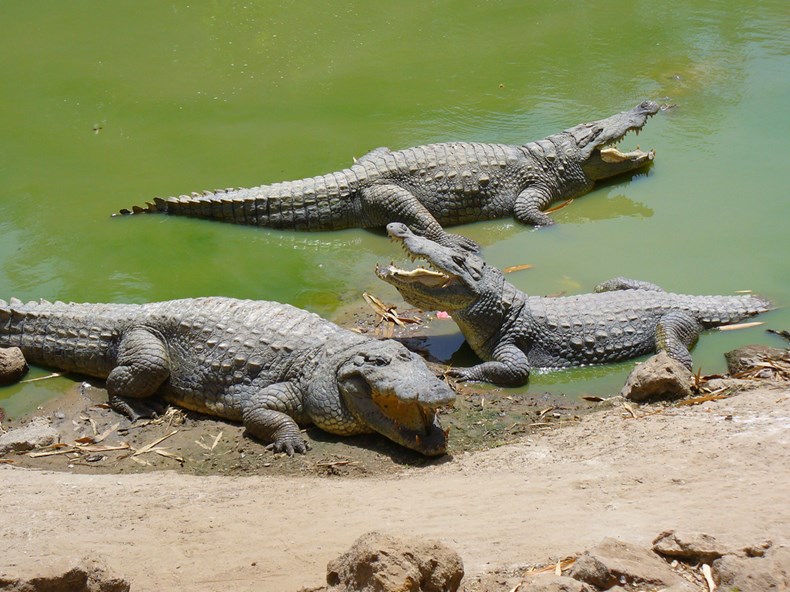Katchikally – the ‘tame’ alligators of The Gambia

The Gambia, known in tourism circles as The Smiling Cost of Africa, is home to a unique family of alligators or crocodiles that live side by side with their human neighbours. Visited by thousands of European tourists every year, the crocs live in a sacred pond called Katchikally in the bustling ancient town of Bakau, about 12 kilometres from the country’s capital city of Banjul and a short taxi ride from the main resort hotels.
An intriguing history:
There are two different versions of the history of Katchikally but they both rotate around an ancient folktale of a child falling into a well and being rescued by two brothers from the Bojang family. One version of the story mentions the involvement of a devil or Jinn who reportedly declared that “any barren (or infertile) woman who bathes with the water from the well would bear a child”. True or not, there is still a strong believe in the community of the healing effects of the waters of Katchikally.
Another version of the folktale mentions how two crocodiles were caught and dropped into the well. There is no development in the narrative as to how that ancient well transformed into the large pond we now call Katchikally; perhaps Africa’s largest collection of semi-domesticated crocodiles.
The pond is now in a six acre site where between 80 and 100 crocodiles of various ages and sizes live freely. They are fed with fish, mainly bonga shad, which is bought by the custodians of the pond.
A major tourist attraction
Katchikally has over the years developed into a major tourist attraction being visited by thousands of tourists every year. The custodians have now built an ethnographic museum on the site, developed a mini-forest nature trail, a souvenir shop and a bar for refreshments. Visitors pay a small entrance fee.
The museum, which was opened in 2004, has on display a collection of about 1,000 artefacts kept in four African round huts. The exhibits depict cultural objects from many of the ethnic groups of The Gambia. They are divided into various sections: local crafts, music, agriculture, initiation rites and traditional medicine.
The ‘Tame’ Alligators
The creatures are not particularly large; most measure less than two metres long. The male and non-nesting female crocs are generally known to be docile and some visitors are seen stroking or touching them but this is not encouraged. One of the largest crocodiles seen in the pond was called ‘Charlie’ but this has now before a generic name for any big male croc.
The animals are thought to be Nile Crocodiles (Crocodylus Niloticus), however research suggests there is also different specie; the Desert or West African Crocodile (Crocodylus Suchus).
In addition to Katchikally, there are two other sacred crocodile ponds in The Gambia; one of Kartong, in South Gambia, and another in Berending in the North Bank Region.
A Nature Trail
Visitors to Katchikally also have the option to embark on a nature trail through a six acre tropical forest bordered by rice fields and shrubs. Several plants and animal species can be found in the unspoilt mini-forest. There are indigenous silk cotton trees, baobab trees, palm trees, figs and other vegetation. For birdwatchers, the forest is rich in bird species, including the blue-breasted kingfisher, hamerkop, barbary shrike, red-bellied paradise and flycatcher. There are also mammals such as green velvet monkeys as well as reptiles such as monitor lizards, agama lizards and various species of snakes, most of them non-poisonous.
